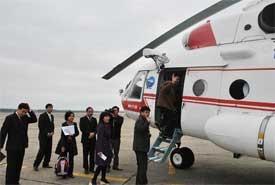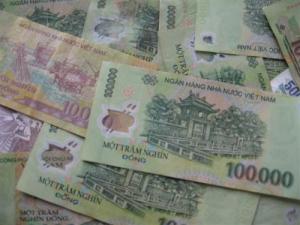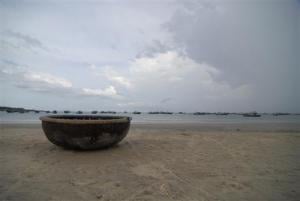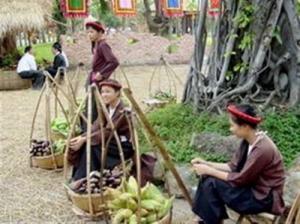The path to school thorny and rocky in border areas
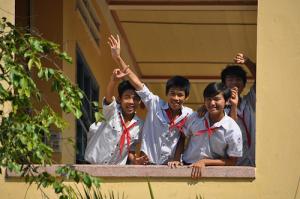
Hundreds of students in the border district of Muong Lat in Thanh Hoa province, have to walk dozens of kilometers of forest road to reach their schools. After the school hours they stay in the short-lived cottages. Rice, salt and forest vegetables are the main kinds of food in their meals.
Located 300 kilometers away from the Thanh Hoa City, Muong Ly is considered the poorest commune of the remote mountainous district of Muong Lat. The commune is having most of the “nos” in Thanh Hoa: no roads into the town center, no electricity grid, no telephone wave, and no markets.
Most of the students of the Muong Ly Secondary School have to travel tens of kilometers of forest roads to reach to their school. Since their houses are too far from school, Mong minority children have to go to the forest to chop down trees, stretch canvas tents along the streams or rivers on the Ma river’s upstream, where they stay and learn every day.
Giang A Sau, 8th grader of the Muong Ly Secondary School, related that his parents are living far in the Suoi Uon mountain village, 17 kilometers far from the school. Sau was brought by his parents to the school on the first day of the new academic year. They went to the forest to cut off bamboo branches to install a cottage. This is the place where Sau will stay and study for the whole academic year.
Sau is now living together with two friends, Mua A Chech and Giang A Dung, who are both 9th graders. The things that the three boys bring with themselves to school are just several books, old clothes and thin blankets. The children cannot sleep on sedge mats, but on the cottage’s floor made of the bamboo sticks.
The poor students only have frugal meals which include rice, forest bamboo sprouts, unripe bananas, and while salt. The lunch of the students here was so simple. “We are lucky today because we have got bamboo sprouts. We always only have rice and salt,” said Giang A Sau.
The boy said that many of his classmates come from Sai Khao, Trung Tien and Xi Lo villages, which are 15-20 kilometers far from the school. The students have to go back to their home at the end of weeks in order to bring rice to the cottages, which will be used on the days they stay there to study. The “well off” parents can give their children 10,000 or 20,000 dong, so that the children can purchase some dried fish for their meals. Meanwhile, poorer parents cannot provide enough rice to their children, and the children sometimes have to go to school with empty stomach.
“We never have breakfast. We just dream of having enough rice for lunches and dinners,” Sau said.
If the students have free time, they would go to the forest to pick up forecast vegetables, get bamboo sprouts or look for ant-eggs for food.
The national electricity grid has not reached out to the remote area, while they do not have money to buy candles or kerosene for paraffin lamps; therefore, the students have to complete reviewing the lessons before it gets dark.
“We have to struggle to live and study. But we try to go to classes every day. We hope that the literacy would help us get good jobs and escape from poverty in the future,” Sau said.
Tran Van Hao, former Headmaster of the Muong Ly Secondary School, who spent 15 years on teaching students in the mountainous district, said that the life here is so hard for teachers as well.
“Vegetables prove to be the luxurious thing in the mountainous area, while pork and beef are just the dream,” Hao said. Every time when Hao and other teachers returned from the trips to the home villages in the lowland, they had to bring toothpaste, shampoo, candles and dried fish, the things which cannot found in the remote area.




